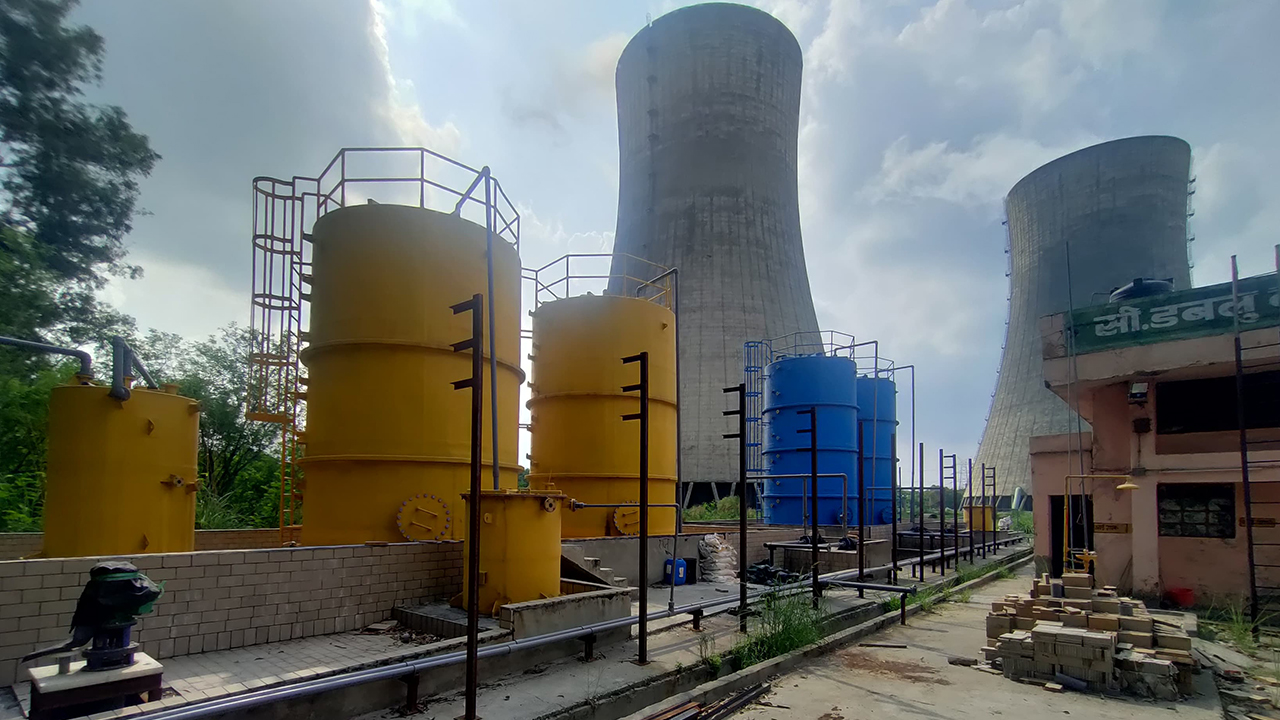
Cooling Tower Treatment
Cooling Tower is an essential process which has been almost mandatory for all industries. A cooling tower functions to cool a circulating stream of water, where large amount of water is being used and recalculating cooler water back through whatever equipment needs cooling (such as a chiller condenser).
Biological growth (bio- film), scaling are the major problems, occurring in cooling tower. The formation of biofilm thickness to decrease heat transfer by 10 - 12%. Only mechanical cleaning cannot remove all traces of biofilm. To achieve the most effective disinfectant or microbiological control program, the chlorine dioxide is a strong biocide decreases or nearly eliminates the need to remove quantities of water from the cooling tower in order to decrease the concentration of organic and mineral solids in the system.
A small dosage of chlorine dioxide gives the efficient cooling tower operation. Chlorine Dioxide offers effective method for decontamination and prevention of build-up of biofilm creating conditions for growth of Legionella. The major benefit of the ClO2 in cooling tower that it does not require continuous basis dosing. 3 – 4 hrs shock dosing maintain the effective disinfectant level to control the microbiological growth. Purita Provides a Tersus Chlorine Dioxide System in Cooling Tower Application.
Advantage of Chlorine Dioxide In Cooling Tower
- Effective at low dosages
- Disinfection activity is very fast
- Excellent for removing biofilm
- Has 2.6 times the oxidising capacity of chlorine
- Effective over a broad pH range (up to pH 12) with no loss of activity.
- Does not chlorinate organics or react with ammonia
- Does not hydrolyse in water to form hypochlorous or hydrochloric acids.
- Generates no taste, color, odour or corrosion at those concentrations used for disinfection.
- Less corrosive than chlorine.
- Highly soluble in water
- No hazardous residues
Benefits
- Reduced water makeup volumes
- Reduced Chemical consumption
- Reduced scaling through coating
- Reduced risk of corrosion and leakages
- Reduced biological growth
- Overall increased energy efficiencies
